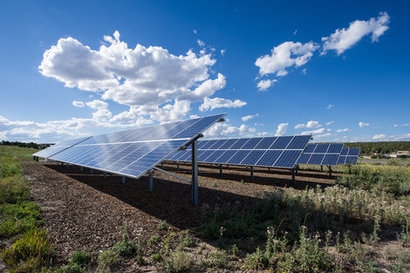
According to long-term North American solar performance maps published today by Solargis, a data and software architect for bankable solar investments, across the Eastern regions of the USA, solar resource, represented by global horizontal irradiation, fell to levels up to 8 percent below the long-term average, with this trend particularly pronounced in 2018 and 2019.
In the North East, irradiation was 10 percent lower than the average in 2018. Asset owners with portfolios in these regions are likely to have seen significant deviation in performance from the Annual Energy Production estimates (AEP) conducted when their projects were financed and built.
“The output of solar projects is inextricably linked to meteorological trends – but the success of solar asset owners depends on how they react to and plan for this” said Marcel Suri, Managing Director, Solargis. “On average, a 1 percent decrease in asset performance translates to lost revenue of $1000 per megawatt per year. It’s essential that US asset owners leverage data to optimise their projects and better account for resource risks.”
Mr Suri added that the US is a critical global market for solar energy and that it is essential that asset owners are able to capture the enormous potential of the North American landmass for solar generation. However, faced with increasingly unpredictable weather patterns, they will not be able to do this without making smart use of the most accurate data available. That’s why Solargis is delivering the most robust data service for US solar to date, combining high resolution data with a user-friendly software platform.
Reducing risk is a key part of maximising profitability throughout the lifecycle of a solar project, from the earliest pre-feasibility studies to accurate forecasting of returns during long-term operations. As a 1 percent reduction in resource risk can increase return on equity by approximately 4 percent for the investor, it is crucial that US asset owners can demonstrate that these risks are appropriately managed.
The challenge of meeting investor expectations will increase in prominence for US portfolio owners as the ITC cliff nears and assets are financed, built and operated with exposure to merchant risk. Likewise, the complexity of projects continues to increase, as hybrid solar-plus-storage assets come online that require detailed forecasting to manage dispatch schedules.
Currently, however, much of the industry still makes use of low resolution irradiation data generated using older approaches from the 1990s or early 2000s. These older datasets do not include data for recent years and lack the granularity required to make reliable prospecting and operational decisions.
Another challenge facing the industry is that there is no standardized approach for selecting the most representative irradiation dataset. A common approach is to compare multiple datasets and select the mean. This can turn out to be a costly mistake, since good irradiation models often capture what less sophisticated models do not, making them an outlier – but still the most reliable choice.
To help the sector meet these challenges, Solargis is expanding its North American presence. Based out of Toronto, Solargis helps major asset owners reduce financial risk throughout the project lifecycle, offering data and software with the highest resolution and lowest uncertainty on the market. The business offers extensively-validated data with 250m spatial resolution, and sub-hourly temporal resolution – essential for development and operation of sophisticated solar portfolios.
For additional information:

